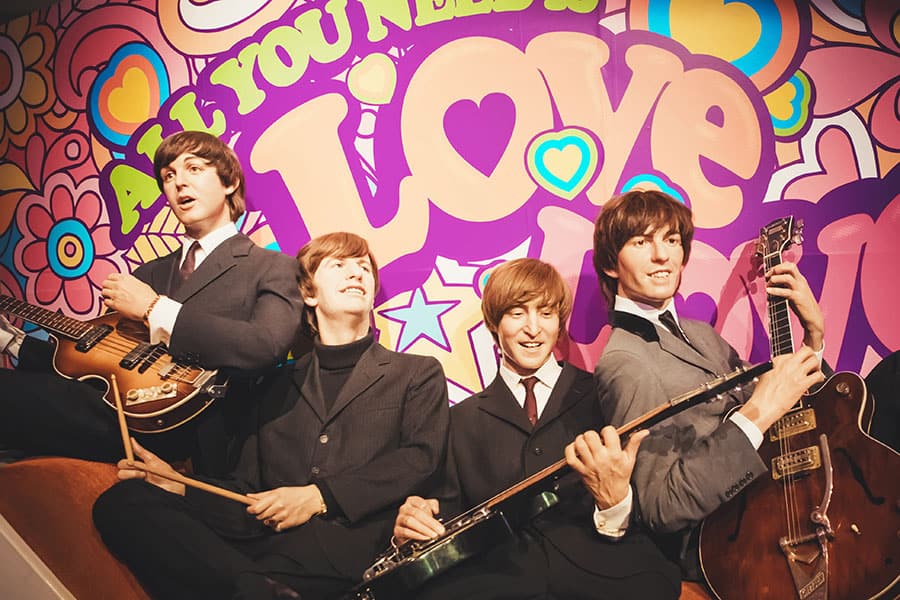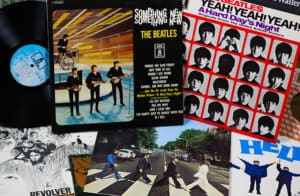In the television documentary “The Beatles Anthology”, Paul McCartney recalled, “Yeah, well, it’s great to be famous, it’s great to be rich – but what’s it all for?” Perhaps that was the question that haunted The Beatles when they arrived in India in 1968. Disillusioned by the empty lustre of the material world, The Beatles had decided to travel to India to seek answers in Meditation. This journey turned out to be quite eventful and went on to shape their music and philosophy in general. Read on to find out how.
The year 1968 was a momentous one. It was the year Apollo 8 completed its first orbit around the moon. Also, it was the year that Czechoslovakia saw a period of reform and liberalization in what is known as the Prague Spring. It was the year civil rights leader Dr. Martin Luther King, Jr was assassinated. Quite interestingly, 1968 was also the year the Beatles chose to make their trip to India to learn the Transcendental Meditation technique.
Just the year before, “The Summer of Love” had taken the western world by storm, and The Beatles had done their share of experimenting with psychedelic drugs. But eventually, they opted to choose meditation over LSD to attain the “higher levels of consciousness”.
Despite their short stint in India learning Transcendental Meditation, the Beatles are said to have been profoundly impacted by the concept of attaining harmony with the inner self through Yoga and meditation. In a world engulfed in war, chaos, rebellion, and a blind rat race, peace and harmony still held a significant value.
The Beatles need no introduction. They have been defined as timeless and legendary by fans across the world and have inspired many young people to pursue music as a career. The foursome was comprised of John Lennon, Paul McCartney, George Harrison and Ringo Starr. Their rise is said to have had a huge socio-cultural impact on the lives of British teenagers in the 1960s, and their tremendous popularity among young people led to the coining of the term “Beatlemania” by the English press. The word stood for the intense fan frenzy and hysterical adulation that surrounded The Beatles.
The journey to Rishikesh and the “Aashram” life
In February of the year 1968, the Beatles reached Rishikesh – the north Indian town on the holy Ganges which is often referred to as “the Yoga capital of the world”. They had come to take classes in Transcendental Meditation (TM) at the ashram of Maharishi Mahesh Yogi. The Maharishi had garnered considerable media attention around the world, and Life magazine had even devoted a cover article to the TM phenomenon.
The Meditation Centre or the “Aashram” is also popularly referred to as the “Chaurasi Kutiya” Aashram, which means 84 huts for prayer or meditation. The compound was set up in a jungle, far from the hustle-bustle of daily life. For seekers of peace, it was a perfect place to feel one with nature.
The Beatles were accompanied by their wives and girlfriends. It was George Harrison’s wife, Pattie Boyd, who had come across an advertisement for TM classes and had immediately signed up for them. Her interest in meditation is what seems to have set this journey in motion. Although Lennon had travelled to Rishikesh along with his wife Cynthia, this was also the time when Lennon was harbouring feelings for Yoko Ono and the two were exchanging letters. Lennon and Yoko Ono’s love story is still remembered as among the most epic and controversial ones.
The Beatles lived a very simple lifestyle in the Meditation centre and were served vegetarian food only. It is said that Ringo Starr carried a suitcase full of baked beans with him in case he had trouble with the Indian food. Ringo and his wife, Maureen, were the first to leave as they could not deal with the “Aashram life” for long.
Maureen had a tough time with the Indian bugs that were too common in the jungle. Out of the four, Harrison was particularly dedicated to meditation, making Lennon remark, “The way George is going, he’ll be flying a magic carpet by the time he’s forty”. Harrison is said to have remained truly immersed in Hinduism for the rest of his life.
Songs inspired by the Aashram stay
The Beatles are believed to have written a large number of songs during their stay in the holy city of Rishikesh. The peaceful environment of the place apparently helped boost the Band’s creative juices. The Aashram provided a very relaxed environment, where the Beatles hung around, meditated, and wrote songs.
Most of the songs that the Beatles wrote during their stay in Rishikesh are said to have made their way into The White Album. The song “Blackbird” is supposed to have been written by McCartney about the noisy crows that created a nuisance during the meditation sessions. However, the song is also said to have been a reference to race relations in America.
The most controversial of all the songs in The White Album is “Sexie Sadie”, which is supposed to have hinted at the alleged misconduct of the Maharishi towards Mia Farrow. Mia Farrow, the wife of the music legend Frank Sinatra, was also on a spiritual escapade to India at the same time as the Beatles after her divorce with the singer.
The Beatles left India as a result of this incident, although the allegations could never be proved. As they were leaving, the Maharishi asked why they were going, and Lennon is said to have replied, “Well, if you’re so cosmic, you’ll know why.”
Influence of Indian culture on the Beatles’ music
It should be noted that the influence of Indian classical music on the Beatles’ songs had started appearing even before their trip to India. The period from 1965 to 1968 saw the crucial effect of Indian music and philosophy on the Beatles’ compositions. One can hear the Sitar, an instrument closely identified with Indian classical music, being played in the song “Norwegian Wood” from the album Rubber Soul, released in 1965. George Harrison had met Ravi Shankar, the renowned Sitar player from India, and he went on to take lessons from the Sitar maestro.
The song “Love You Too” from their 1966 album Revolver, featuring instruments like the Sitar and Tabla, reflected the influence of Indian classical music on the Beatles even more. Then came “Within You without You”, in their 1967 album Sgt. Pepper’s Lonely Hearts Club Band. Written by Harrison, the song evokes the nuances of Hindu philosophy in its lyrics and features various Indian classical instruments.
“Across the Universe”, the song that became the first song to be beamed directly into space by NASA, is also known to be inspired by the Beatles’ interest in Transcendental Meditation. The Sanskrit phrase, Jai Guru Dev Om in the song literally translates to “Victory to God divine”.
Why does the concept of inner peace make so much sense to us today?
The significance of inner peace and harmony makes all the more sense in the unprecedented times we are living in today. The track “The Inner Light” from the Beatles album, which again is inspired by Indian classical music and philosophy, is a song to live by in these trying times.
“Without going out of my door, I can know all things on Earth. Without looking out of my window, I could know the ways of heaven”, the song goes.
With almost the entire world shut indoors, we have so much time to work on ourselves and become better versions of our previous selves. So listen to some great tracks by the Beatles, make some good music yourself, meditate, and most importantly seek peace within yourself, not outside!
Photos: Shutterstock
Support us!
All your donations will be used to pay the magazine’s journalists and to support the ongoing costs of maintaining the site.
Share this post
Interested in co-operating with us?
We are open to co-operation from writers and businesses alike. You can reach us on our email at [email protected]/[email protected] and we will get back to you as quick as we can.













